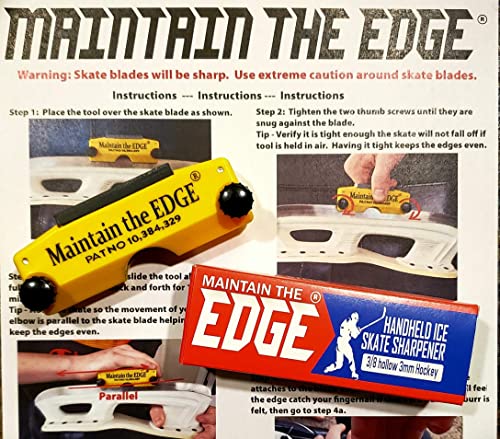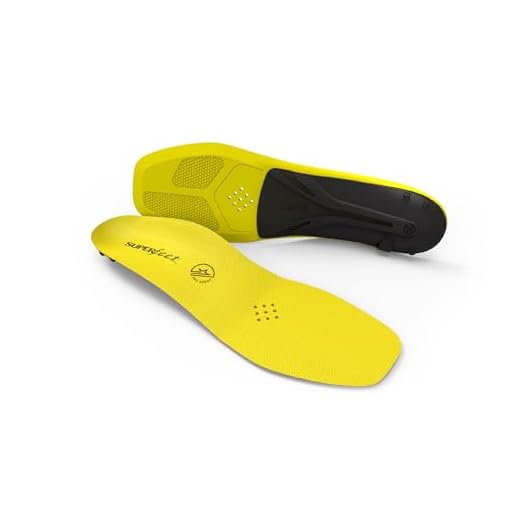




In the fast-paced world of ice hockey, where players glide effortlessly across the ice and showcase their incredible skills, the importance of high-quality footwear cannot be underestimated. Ice hockey shoes, much like any other piece of equipment, play a crucial role in a player’s performance on the ice. These foot accessories, crafted to provide ultimate support, comfort, and stability, are an essential investment for every ice hockey enthusiast.
However, have you ever wondered how long these essential tools can withstand the demanding rigors of the game? How many hours of play can they endure before they start to show signs of wear and tear? The lifespan of ice hockey skates is an intriguing topic that provokes curiosity among both players and fans alike. Understanding the durability and longevity of these indispensable components is essential for not only saving money but also maintaining optimal performance on the ice.
Similar to any athletic equipment, the durability of ice hockey footwear can vary based on various factors. For instance, the frequency and intensity of usage can significantly impact their longevity. Seasoned professionals who hit the ice frequently and train rigorously may experience quicker wear and tear compared to casual players who engage in the sport on a less frequent basis. Moreover, the quality of the skates and how well they are maintained also play a vital role in determining their lifespan.
Factors Influencing the Durability of Ice Hockey Skate Equipment
The lifespan of ice hockey skate equipment is influenced by a variety of factors that can impact its durability and longevity. Understanding these factors can help players and enthusiasts make informed decisions when purchasing and maintaining their skates.
One of the key factors affecting the lifespan of ice hockey skates is the frequency and intensity of usage. Skates that are used frequently and in high-impact activities, such as competitive games and intense training sessions, may experience more wear and tear compared to those used less frequently or for recreational purposes.
Another factor to consider is the quality of materials used in the construction of the skates. Skates made with high-quality, durable materials are likely to withstand the rigors of the game and last longer compared to skates made with lower-quality materials. Factors such as the type of leather used for the boot, the strength of the chassis and blade holder, and the quality of the blades themselves can all contribute to the overall durability of the skates.
The fit and comfort of the skates also play a significant role in their lifespan. Skates that are properly fitted and provide good support and comfort to the player’s feet are less likely to develop structural issues or experience premature wear. Proper fit can help distribute the pressures and forces exerted on the skates more evenly, reducing the chances of stress points, cracks, or premature breakdown of the materials.
The maintenance and care practices adopted by skaters can greatly influence the lifespan of their skates. Regular maintenance, such as sharpening the blades, tightening screws, and cleaning the skates after each use, can help prevent unnecessary damage and prolong their lifespan. Inadequate maintenance or improper storage can lead to accelerated deterioration of the skates, compromising their overall durability.
Lastly, external factors such as the playing surface and environmental conditions can impact the lifespan of ice hockey skates. Rough or abrasive playing surfaces, such as outdoor ice or artificial turf, can cause increased wear on the skates. Extreme temperatures, moisture, and exposure to harsh chemicals or excessive sunlight can also lead to deterioration of the materials and components over time.
In conclusion, the lifespan of ice hockey skates is influenced by a combination of factors including usage frequency, material quality, fit and comfort, maintenance practices, and external conditions. Understanding and considering these factors can help players and enthusiasts select and maintain durable and long-lasting skates for their ice hockey activities.
The Importance of Skating Technique and Frequency
Skating technique and frequency play a crucial role in the overall performance and durability of ice hockey footwear. Mastering proper skating technique and maintaining a consistent practice schedule are essential for maximizing the lifespan of your hockey skates. This section will delve into the significance of focusing on skating technique and the benefits of regular training sessions.
1. Mastering Skating Technique
Efficient skating technique not only enhances performance on the ice but also minimizes the wear and tear on your hockey skates. By mastering the fundamental skills such as proper stride, balance, and edgework, players can optimize their movements, exert less strain on the skates, and increase their longevity. A controlled and efficient stride helps distribute pressure evenly across the blade, preventing premature damage and ensuring a longer lifespan for your skates.
2. Consistent Practice Schedule
The frequency of skating practice significantly influences the durability of hockey skates. Regular training sessions allow players to maintain and refine their skating skills, reducing the risk of developing bad habits that can place excessive stress on the skates. Think of your skates as tools that require consistent sharpening and maintenance through constant use. Dedication to a structured practice schedule not only improves skating technique but also ensures that the skates are being utilized optimally, increasing their lifespan.
| Benefits of Mastering Skating Technique: | Benefits of Consistent Practice Schedule: |
|---|---|
|
|
5 Tips to Prolong the Lifespan of Your Skates
When it comes to your prized hockey skates, ensuring their longevity is crucial for optimal performance on the ice. This section provides five valuable tips on how to extend the durability and usefulness of your skates. By adhering to these guidelines, you can maximize the lifespan of your cherished skating equipment without compromising on quality.
1. Proper Cleaning and Drying
Regularly cleaning your skates after each use is essential for preventing the buildup of dirt, moisture, and bacteria. Utilize a soft cloth or sponge to wipe away any accumulated debris from the exterior surface. Ensure to remove the laces and insoles for thorough cleaning. After cleaning, allow your skates to air dry completely before storing them in a well-ventilated area.
2. Sharpen Blades Regularly
Maintaining sharp blades is vital for excellent traction and maneuverability on the ice. Based on your frequency of use, consider sharpening your skate blades at least once every 10-15 ice sessions. Remember to engage the services of a professional skate technician to ensure precise sharpening and avoid any potential damage to the blades.
3. Quality Skate Guards
Invest in high-quality skate guards that provide effective protection to the blades when not in use. Properly fitting guards shield the blades from impact damage while keeping them safe from external elements that may cause premature rusting or dullness. Always remember to use guards when walking off the ice to extend the longevity of your blades.
4. Storage Considerations
When not in use, store your skates in a cool, dry place to prevent any moisture-related issues such as mold or rust formation. Utilize a skate bag or a designated skate compartment to shield them from accidental impacts and to maintain their original shape. Avoid storing heavy objects on top of your skates to prevent unnecessary pressure on the blade holders and supports.
5. Regular Inspections and Maintenance
Perform regular inspections of your skates to identify any signs of wear and tear. Check for loose screws, worn-out padding, or damaged eyelets. Replace or repair any faulty parts promptly to prevent further damage. Additionally, consider having your skates professionally serviced on an annual basis to ensure they are in optimal condition and to address any underlying issues before they escalate.
By following these five tips diligently, you will enhance the lifespan of your hockey skates, allowing you to enjoy the thrill of the game with reliable and high-performing equipment for a longer period.
Proper Skate Care and Maintenance for Prolonged Lifespan
Skate maintenance and care are crucial factors in extending the lifespan of your skates and optimizing your performance on the ice. By adopting the right practices and investing time in regular maintenance, skaters can ensure that their equipment remains in excellent condition for an extended period. This section explores essential tips and techniques for proper skate care and maintenance that will help maximize the longevity of your investment.
1. Cleaning and Drying
Regular cleaning of your skates is essential to remove dirt, moisture, and other debris that can accumulate during playtime. Use a damp cloth or sponge to wipe down the outer surface of the skates, paying attention to remove any dirt or mud. Make sure to dry the skates properly after each use to prevent moisture buildup, which can lead to rust and damage. Place them in a well-ventilated area away from direct heat sources, as excessive heat can cause the materials to warp or crack.
2. Blade Maintenance
Proper care of the skate blades is vital to ensure optimal performance and longevity. After each use, inspect the blades for any signs of damage, such as nicks or dullness. Using a cloth or towel, carefully wipe down the blades to remove any moisture or debris left from skating. To maintain sharpness, consider investing in regular blade sharpening by a professional. Additionally, using blade covers when off the ice can protect them from unnecessary damage.
Maintaining a consistent blade profile, such as a hollow or radius of hollow (RoH), is also crucial. This profile determines the contact between the ice and the blade, affecting grip and maneuverability. Consult a skate specialist to understand and ensure the appropriate blade profile for your style of play.
3. Boot Care
The boot is the foundation of the skate and requires proper care to keep it in optimal condition. Avoid leaving your skates in extreme temperature conditions, such as inside a hot car or next to a heater, as this can cause the materials to warp or crack. Proper storage in a cool, dry place will help maintain the integrity of the boot.
Taking the time to loosen the skate laces after each use allows proper ventilation and helps prevent moisture buildup within the boot. Additionally, periodically inspect the boot for signs of wear and tear, such as cracks or separations. If any issues are noticed, consult a professional for repair or replacement options.
By following these essential tips for skate care and maintenance, you can enhance both the lifespan and performance of your hockey skates. Prioritizing regular cleaning, drying, blade maintenance, and boot care will ensure that your skates remain in excellent condition, supporting your on-ice endeavors for years to come.
FAQ
How long do hockey skates typically last?
The lifespan of hockey skates can vary depending on usage, maintenance, and quality. On average, a pair of hockey skates can last anywhere from one to three years for regular players. However, professional players or those who play more frequently may need to replace their skates every season or even more frequently.
What factors can affect the lifespan of hockey skates?
Several factors can influence how long a pair of hockey skates last. Firstly, the frequency of use is important. The more often the skates are used, the quicker they will wear out. Secondly, the quality of the skates plays a significant role. Higher-quality skates are generally more durable and can withstand more extensive use. Lastly, proper maintenance and care, such as regular sharpening and keeping them dry, can help prolong their lifespan.









